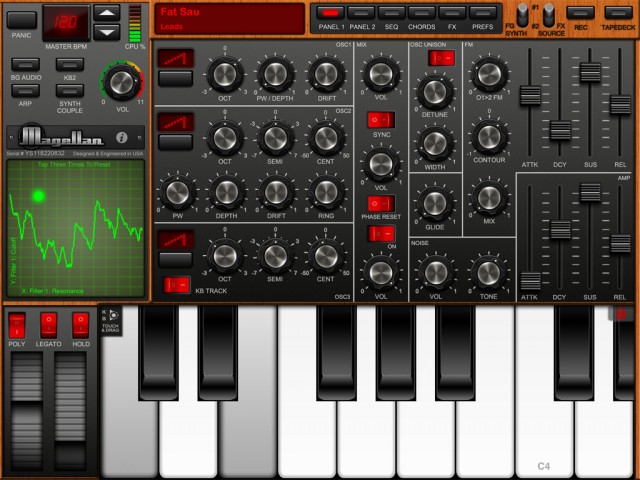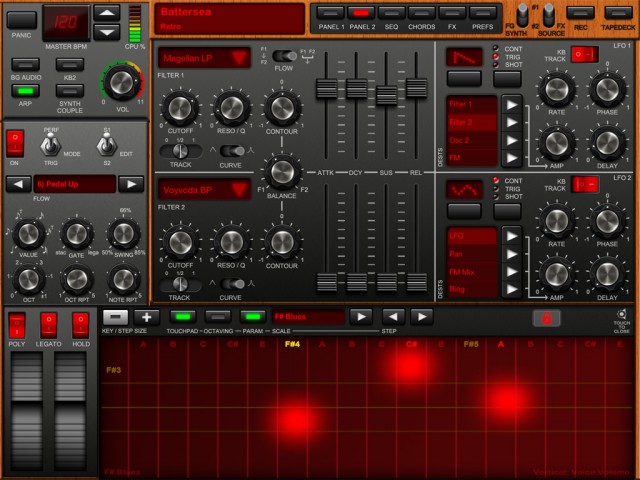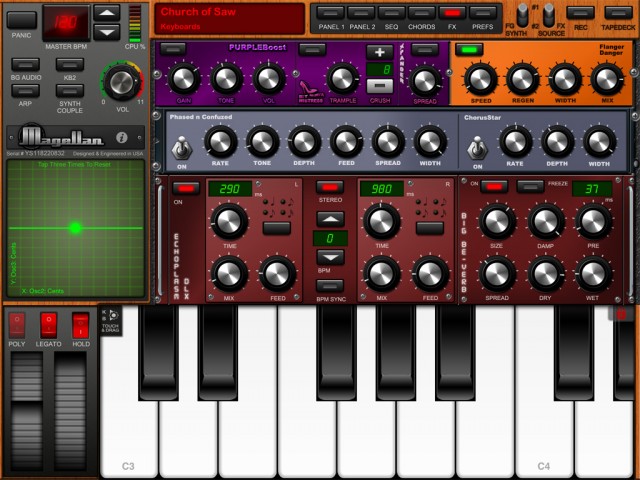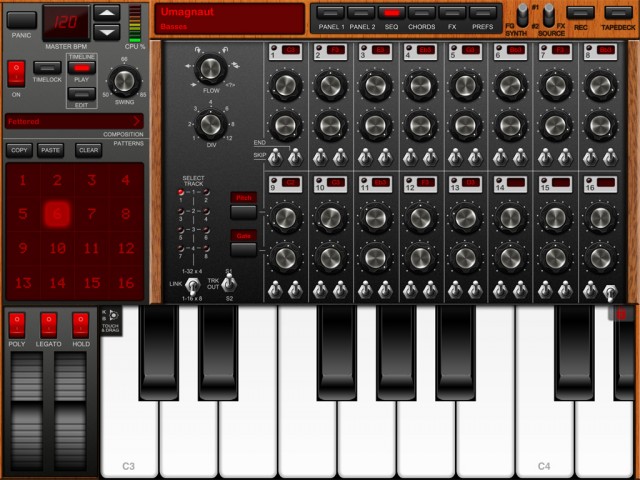Occupying some space between hardware and computer plug-in, the iPad synth is reaching a new level of maturity. We saw that last year with Moog’s Animoog (see various coverage), and, while I took some flak by arguing that it wasn’t equivalent to hardware creations from Moog and others, I think it is a beautiful example of some of the best of this “third category” of synthesizer instrument.
Animoog, for its part, has grown in depth since then and attracted long-time users, along with a handful of other top-notch synths that rise above the crowd. Musicians using these instruments often blend them with computers and hardware, then take them on the road or into an armchair, as another form of immersive instrument that can yield long-term relationships. That’s a pleasant surprise for a genre that threatened to become overly disposable.
Magellan is the latest example of what an iPad synth can be. And, if you feel overwhelmed by choice on Apple’s expansive App Store, this one is genuinely unique. It combines two synth engines, and multiple pages that unlock features like a sequencer. It’s fully virtual analog, modeling the sound of hardware. And it supports every kind of MIDI, for connections to other apps and hardware, providing the sort of workflows that can make it part of a variety of music making experiences. After a few days of playing with it, I’m quite hooked.
Features:
- Two independent synth engines – while sometimes this can be a little confusing from a UI perspective, the power is unquestionable, as you can either use these as separate parts or produce thick, layered sounds.
- 6 oscillators, 4 filters, 4 LFOs total. (each with 3 oscillators, 1 + 2 doing PWM wave generation, and an oscillator unison module for “super-wave”-style effects.)
- Virtual analog modeling; no samples.
- FM module.
- 11 filter types, with filters in parallel or series and dedicated envelopes and tracking.
- Polyphonic step sequencer (8-note polyphony, 16- or 32-step programming). Uniquely, this includes import/export capability, in addition to other gating and pattern generation features.
- Arpeggiator and chord maker.
- An effects rack, resembling tools like Reason and Native Instruments’ Guitar Rig, complete with “multi-parameter reverb, BPM-syncable stereo delay, phaser, flanger, chorus, waveshaper, bitcrusher, and a sonic expander.”
- 32-bit floating point audio throughout the engine and effects.
- Onscreen keyboards, dual touch-pad controllers. Yes, I still like keyboards better than the screen (available via MIDI), but the X/Y pads are fun, and the keyboards do work when you’re on the go. And the keyboards have some terrific features that make them more usable (as found on some other iOS synths), including key constraints and dual-manual setups.
- Two independent LFOs, modulation matrix.
- Hundreds of presets, plus unlimited custom preset storage.
With MIDI, you can go from being “just an iPad app” to working inside a studio environment, whether a physical studio full of traditional gear or integration with other apps on the iPad or integration with a computer. Jessie Peters tells CDM that it supports MIDI … everything:
Magellan has all currently available MIDI capabilities of iOS: CoreMIDI, Virtual MIDI, MIDI CC Mapping, MIDI Learn, MIDI Out, etc. We definitely plan to keep the MIDI updated as more becomes available to iOS.
I was also curious about the audio engine under the hood. Head Engineer Jim Yonac touts the work they’ve done to us:
Aside from the obvious modular approach to UI, and all the mahogany woodwork… for the audio, we started from the very end product: the sound. We tried to achieve what we consider the “warmth” of the analog equipment. Much mathematical modelling was spent on the way the waveforms are generated by the oscillators, as well as how they mixed. The filters were written from scratch — filters were a very important component of analog synthesis — and modelled and tested for response over about a year and a half that lead to the final app. A lot of work went into making the “perfect” (relatively speaking…) effects to complement the synth signal. Usually, good effects work very subtly and don’t completely erase the original intentions of the performer. Good effects are also musical within their tolerances so that the performer can use them as an instrument beyond to complement their original instrument. We tried recreating much of that both by ear and mathematical design.
It’s definitely a traditional UI, so if you hate fake wood onscreen, get ready. But while the interface is conventional, I find it quite usable and friendly, and if you don’t mind a bit of screen switching and swapping between the two synths, the whole thing really feels like a virtual analog workstation. It’s undoubtedly one of the best synths out there. And I had a pleasure using it on my first-generation iPad, so you don’t need the latest-and-greatest hardware, either. (In fact, apart from a couple of apps that don’t run, if you get a bargain price on an original iPad, it can be a nice budget addition to a music-making setup.)
Give it a try and let us know what you think.
http://www.yonac.com/magellan/index.html
Updated: a video review by Time Webb, via Synthtopia.



